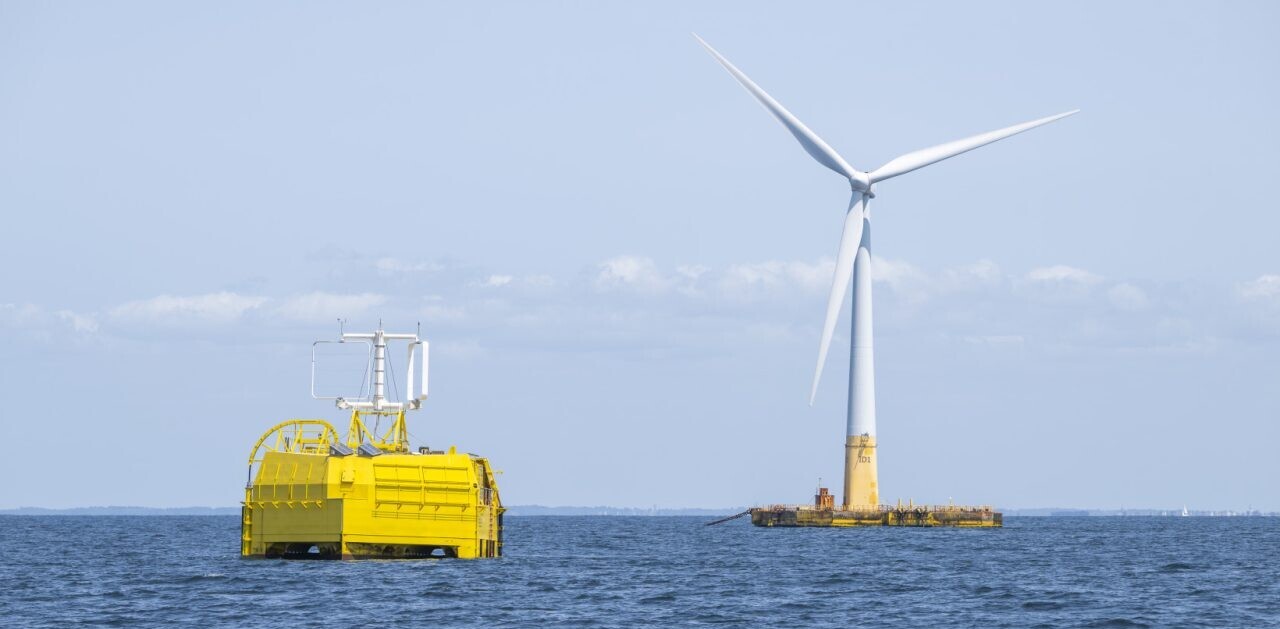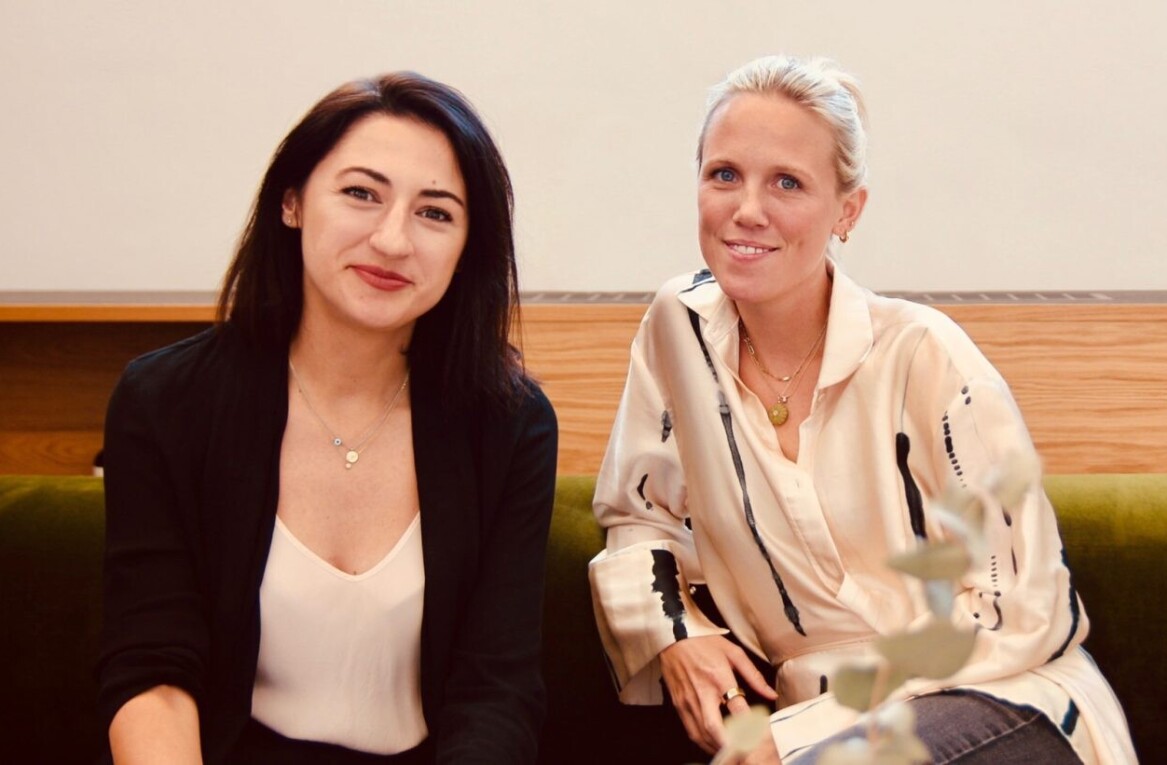
While a lot of our career, personal, and travel plans have been put on hold this year, there’s one thing we as a society cannot afford to put on hold: the fight against climate change.
Rather than scaling back the progress we’ve made, many are seeing this moment as an opportunity to create a new normal in which sustainability and circularity are integrated into our businesses and daily lives.
With this in mind, Techleap.nl recruited some of the brightest minds in Dutch sustainability tech to join the Rise Programme for up and coming scaleups. The theme for batch two this year was: flattening the climate curve.
We caught up with four of the Programme’s cohorts to find out what they see as the biggest hurdles to tackling climate change within their industry.
Making sustainable transportation an option for the masses
Transportation is responsible for 30% of the EU’s total CO2 emissions. And cars are the biggest polluters, accounting for 60.7% of CO2 coming from road transportation.
With the explosion of new electric cars on the market, consumers are being courted with new transportation alternatives and government-backed incentives. But electric car registrations have still only increased incrementally across the EU from just 2% in 2018 to 3.5% in 2019. So what’s holding people back?
While there is a large and growing consumer base who are ready to make the switch, as Lex Hoefsloot, CEO of Lightyear, explained, “If you look at the research into why more people aren’t buying electric cars they come down to: cost, charging, and range. And that’s been the same for the last ten or fifteen years.”
So-called ‘range anxiety’— or the fear that an electric car could simply run out of electricity at the most inopportune time (like on a dark, creepy horror movie type road at night) — has been one of the biggest concerns voiced by consumers.
Connected with this are questions about charging infrastructure. There are gas stations set up everywhere, but how many charging points are actually out there for electric cars? What if I want to go on a road trip? Will I have to hitchhike halfway through?
Lightyear is looking to solve both range and charging for consumers who are still on the fence about making the switch to electric.
“Rather than targeting people already interested in buying an electric car, we want to focus on other people. People who live in apartments and can’t charge at home. Or people who want to drive long distances every day,” Hoefsloot said.
And just how do they plan to do this?
While studying engineering at the Eindhoven University of Technology, Hoefsloot and a team of students were tasked with building and racing a solar car in one year at an annual competition in Australia. After winning the competition with their solar-powered four-seater, Hoefsloot realized that the next step was to bring the concept to the masses. Thus Lightyear was born in 2016.
“We felt, if it’s possible to go from zero to a car built from scratch within a year, and win as well, then the sky’s the limit.”
Set to go into production in 2021, Lightyear One will be one of the first long-range solar electric cars. It has a battery with up to 700km of range plus five square meters of solar panels that add on 12km of range for every hour the car is in the sun.
They also made the Lightyear One more energy efficient. A normal electric car uses about 200-watt hours per kilometer, while their model uses about 100-watt hours per kilometer. So, for every bit of energy you have, you can go twice the distance.
As Hoefsloot explained, “Even in The Netherlands – a horribly rainy country – it can charge about 7,000 km per year, which is more than half of what people drive on average in the Netherlands. So in practice, you would only need to charge once every few weeks, rather than every few days.”
The third problem they want to solve for consumers in the future is cost. The Lightyear One will be the company’s first low volume car, but the plan is to later go on to build a high volume model that will be more affordable for a larger audience.
“A lot of people still don’t have the money to buy an electric car. We shouldn’t judge people for not making the switch because there are simply not enough options on the market yet. That’s why the push coming from the EU with its new incentives for alternative energy vehicles is so important.”
But, for now, Lightyear’s biggest challenge is assembling a winning team that can make their ambitions a reality. They now have a number of vacancies they want to fill on their website. Hoefsloot encouraged anyone who believes they can help the team achieve their ambitions to reach out.
“Frans Timmermans, Vice President of the EU, once said, ‘the biggest misconception is that if you do nothing, everything will stay the same.’ Sometimes, in the Netherlands, I have the feeling that we hold ourselves back. We’re a small country. We’re not the US. And sometimes we start to think: ‘Can we do this? Maybe we should start with a smaller mission?’ But I would encourage anyone who has an idea to just start with it and make it happen,” Hoefsloot said.
Shaping an emission-free energy system
It’s not just our wheels that could use a green energy boost. Moving from the current, fossil fuel-based electricity system, to an all-renewable energy system, is crucial to stopping climate change but also more complex than just installing a lot more solar panels and wind turbines.
Simon Bushell, CEO of Sympower, believes that “One of the key things we need to do is empower traditional industries to actively contribute to the energy transition. A fully sustainable and interconnected energy system would bring us a big step forward in powering the net-zero future.”
But, as Bushell explains, it’s not that easy.
If you look specifically at the electricity system, supply and demand always need to be in balance. In the current model, the large coal and gas-fired power plants that provide electricity constantly look at how much electricity is being used. When they see more is being used, they burn more coal and gas. Similarly, when they see less electricity is being consumed, they reduce output.
What hinders the widespread adoption of renewable energy is that it’s harder to control than fossil fuels.
The challenge with wind and solar energy is that they are variable and not controllable – you can’t just ask a solar plant to produce more electricity, you need the sun to be shining. As increasing numbers of countries are looking to move away from carbon-intensive energy sources, this problem will only become more complex.
Bushell and his team at Sympower realized that the energy transition would require new demand response technology and solutions. That’s why the company focuses on providing flexibility by regulating demand instead of supply.
Processes such as heating, cooling, ventilation, and water pumping use lots of electricity, however, it’s not necessarily crucial when that electricity is used. Take a fridge, for example – if you turn it off for ten minutes everything inside it will remain cold, but crucially it will use less electricity. On the other hand, you can also make a fridge colder by using more electricity initially, before turning it off for longer. Basically, assets such as fridges can control when electricity is consumed. This is exactly what we do. We make any asset flexible, balancing electricity supply and demand in real-time the same way a coal or gas-fired power plant would.
Sympower has grown rapidly due to a very enthusiastic client base which has helped it spread the word organically. The company is now operating in Finland, Sweden, the Netherlands, and Israel, with plans to expand to three new countries in 2021.
“What we do is something people don’t often know about, so it’s been really cool to see how enthusiastic our clients are to really help enable a fully-renewable energy grid in their country,” said Bushell.
However, there are still hurdles that Sympower has to overcome to reach a wider audience. Bushell told TNW:
One of the biggest challenges we face is regulation. Before we can start operating in new countries, we need certain regulations to change that will allow us to operate as an independent demand aggregator. Slow regulatory changes are probably our biggest blocker at the moment.
When asked about what the world needs to do now to flatten the climate curve, Bushell told TNW: “I think there’s no silver bullet in the energy transition. If anyone tells you what they do is the one key thing, I would be very skeptical. A combination of solutions is what is actually needed. I do believe that we provide an essential service – the energy transition can’t succeed without flexibility.”
Giving waste a second life
Until recently, a lot of the focus on tackling the climate curve has been centered on improving energy efficiency. It’s only in recent years that waste and the end life of a product or materials have come under closer scrutiny.
In a TED Talk, Excess Materials Exchange founder, Maayke Aimee Damen, highlighted that, while improving energy efficiency is important, this only accounts for 55% of greenhouse gas emissions. Guess where the other 45% come from: the actual materials/product we produce (including waste).
According to a report by the Ellen MacArthur Foundation, if we just focused on designing out waste, keeping materials in use, and regenerating farmland in five key areas (steel, plastic, aluminum, cement, and food) we could eliminate 9.3 billion tons of greenhouse gas emissions. To put this into perspective, this would be the equivalent of cutting the emissions of every vehicle down to zero.
While this sounds like an amazing opportunity to cut emissions, the truth is, many companies don’t really know where to start. As Damen explained,
Companies aren’t always aware of what they have because it’s all in different databases and it’s unstructured. Right now they don’t really have an idea of what’s going through their organization. And if they have that, it’s always spread out over different departments, in different formats and databases, some on paper, some online. So if the information is already there, it’s not comparable and it’s dispersed. And that’s where we come in handy.
In 2017, Damen and her co-founder, Christian van Maaren, created Excess Materials Exchange (EME), a self-described ‘dating site’ for excess materials. The team starts out by helping companies to structure the materials and products they have available by providing each one with a ‘Resource Passport’ containing insights into the composition, origin, toxicity, or deconstructability of the item.
This then allows EME to track and trace these materials throughout the supply chain and match them with other reuse opportunities, either inside or outside of the organization.
For example, they were able to help one of their customers, Dutch railway company ProRail, match excess rail tracks in one city to other worksites in need of materials across the country.
This also leads to some unlikely matches. For example, the Netherlands is famous for its tulips, but what happens with leftover flowers after the growing season ends? While in some cases growers have even paid to have someone get rid of the excess flower waste, EME instead has helped connect growers to pigment makers who can reuse them. Clearly, opposites do attract.
And Damen has seen that having a system in place is helping make the business case for recycling much easier:
I think having standardized bookkeeping for resources is going to be a tremendous help in making data-driven decisions. Because that’s what we need if we want to tackle this. We can’t just go on our gut feeling. We see that a lot with circularity ending up as a gimmick. That’s why gathering data is so important.
With a lot of enthusiasm and support coming from their current clients, Damen told TNW that the company’s main goal for 2021 is to attract the investment needed to scale up their operations.
One piece of advice she would give to companies who really want to begin making a difference is to have clear KPIs in place.
“The biggest hurdle we see is that the urgency is quite low. People find it hard to relate to something that’s not tangible. It’s on companies right now to reduce their emissions or to start exchanging materials, but they don’t necessarily have a strategy or KPIs to steer them in the right direction. This makes it very hard for individuals within companies who want change to succeed because, if they succeed, there’s no KPI they’re going to be rewarded on and, if they fail, they have a problem. So the incentive scheme isn’t tailored towards taking action in the majority of organizations,” Damen told TNW.
Making international travel faster and greener
Perhaps one of the more difficult sacrifices we’ll have to make to lower our carbon footprint will be our wanderlust. While there are more and more options to cut emissions from our daily commute, for international travel we’re still reliant on flights to get us where we need to go.
While commercial aviation is only responsible for 3.5% of the EU’s greenhouse gas emissions, it’s also growing faster than any other transport sector has increased by 130% over the past two decades. Although electric trains are becoming more popular, a train journey from Amsterdam to Paris or Frankfurt still takes around three to four hours.
But Hardt Hyperloop is making some exciting new advancements that could cut a three-hour intercity trip down to just 30 minutes. The company’s vision is to replace short-haul air travel across Europe with a 10,000km network of tubes that can zip people and cargo across borders. Not only is the hyperloop system expected to take less time, it’s also powered by renewable energy.
The energy-efficient tech behind the system is perhaps the most interesting part. Each hyperloop vehicle is pushed through the tube system using a combination of electromagnetic suspension and electric propulsion. This technology, along with the low-pressure environment created within the tubes, helps to propel the vehicles forward at high speeds.
While it may be a while before we can all jet-set across Europe by tube, Hardt plans to open the first European Hyperloop Center in 2022 where engineers, researchers, and governments can collaborate together to make this futuristic-sounding vision a reality.
From innovative technology to collecting the right data to government-backed regulations and incentives, there’s still a lot to be done. But one thing we did hear from all of this year’s cohorts was that the most important ingredient is there: the will and motivation to change. As Bushell of Sympower said:
I think it’s definitely starting. I don’t think we’re there yet. But you definitely see that more and more companies are saving energy and reducing CO2 and it’s becoming more important for them. But there’s still a lot of awareness that we could bring.
Get the TNW newsletter
Get the most important tech news in your inbox each week.





